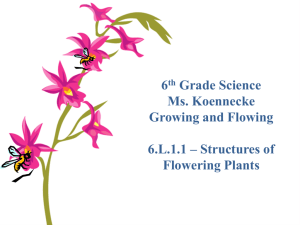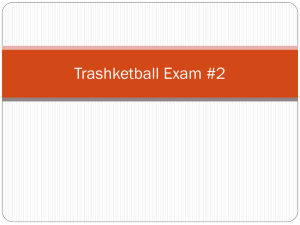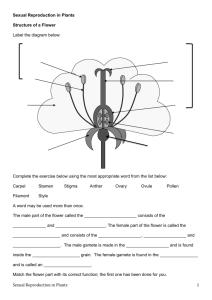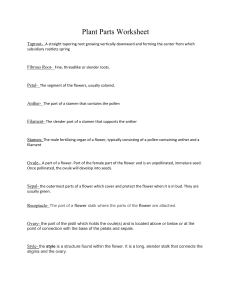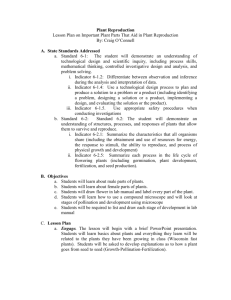Biodiversity Activity - Lincoln-Way Community High School District 210
advertisement
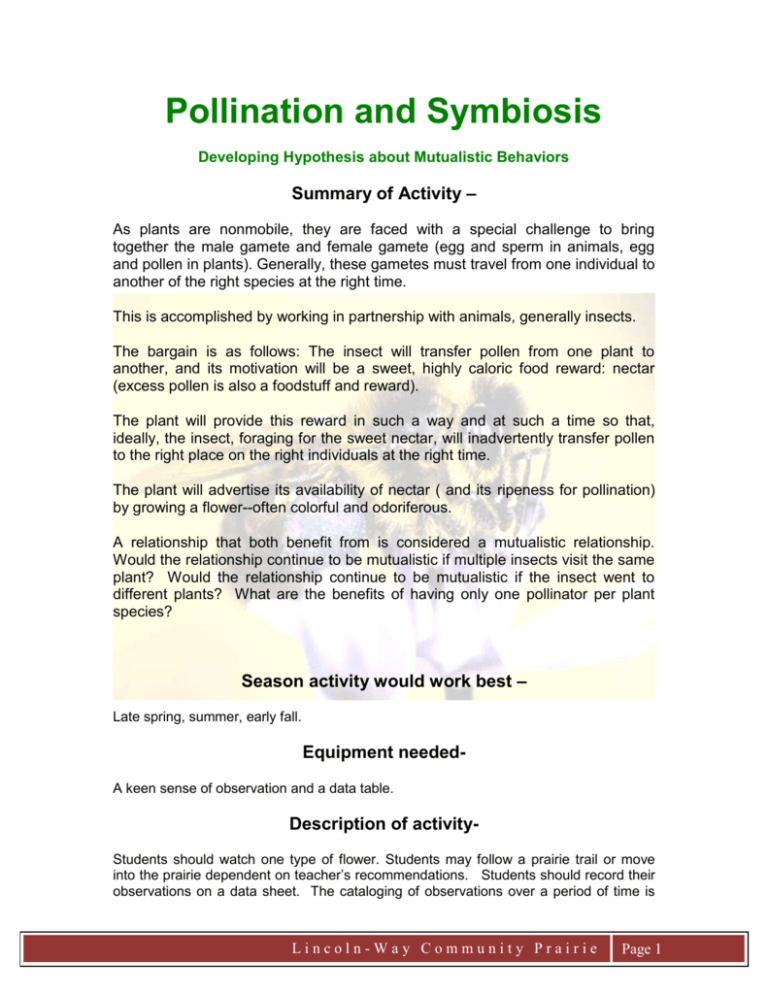
Pollination and Symbiosis Developing Hypothesis about Mutualistic Behaviors Summary of Activity – As plants are nonmobile, they are faced with a special challenge to bring together the male gamete and female gamete (egg and sperm in animals, egg and pollen in plants). Generally, these gametes must travel from one individual to another of the right species at the right time. This is accomplished by working in partnership with animals, generally insects. The bargain is as follows: The insect will transfer pollen from one plant to another, and its motivation will be a sweet, highly caloric food reward: nectar (excess pollen is also a foodstuff and reward). The plant will provide this reward in such a way and at such a time so that, ideally, the insect, foraging for the sweet nectar, will inadvertently transfer pollen to the right place on the right individuals at the right time. The plant will advertise its availability of nectar ( and its ripeness for pollination) by growing a flower--often colorful and odoriferous. A relationship that both benefit from is considered a mutualistic relationship. Would the relationship continue to be mutualistic if multiple insects visit the same plant? Would the relationship continue to be mutualistic if the insect went to different plants? What are the benefits of having only one pollinator per plant species? Season activity would work best – Late spring, summer, early fall. Equipment neededA keen sense of observation and a data table. Description of activityStudents should watch one type of flower. Students may follow a prairie trail or move into the prairie dependent on teacher’s recommendations. Students should record their observations on a data sheet. The cataloging of observations over a period of time is Lincoln-Way Community Prairie Page 1 called an ethogram. Your group will be assigned a flower. Describe that flower and include a sketch. Next, watch the flower for ten minutes in one minute intervals. Every minute, write down what type and how many insects are on the flower. After careful observation, collect your data and share it with your class. Create a data table to analyze the type of flower and number of pollinators. Think carefully about your data and develop a hypothesis about pollination and flowers from your careful observations. Lincoln-Way Community Prairie Page 2 Pollination Ethogram Name of test flower: Description of test flower: Lincoln-Way Community Prairie Page 3 Time Type of animal (description) Activity observed 1 minute 2 minutes 3 minutes 4 minutes 5minutes 6 minutes 7 minutes 8 minutes 9 minutes 10 minutes Total number of pollinators # Lincoln-Way Community Prairie Page 4

